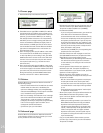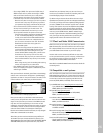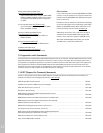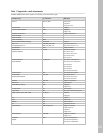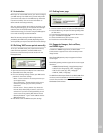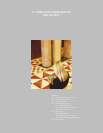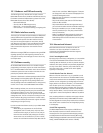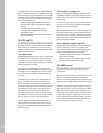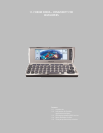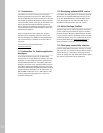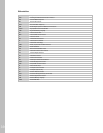
9.1 General
This chapter shows how the Nokia 9290 Communicator can
be configured remotely using Symbian’s Bearer Indepen-
dent Object (BIO) messaging. Remote configuration helps
the end user to get the most out of the device as quickly as
possible. Complex settings, such as Internet settings, can be
“pushed” to the device by the carrier or the help desk of an
Internet service provider or a corporate IT department.
The configuration messages are sent to the Nokia 9290
Communicator using the GSM Short Message Service
(SMS). For maximizing the compatibility and minimizing
the transition period for help desks, the BIO messaging
support for the Nokia 9290 Communicator is similar to
Nokia Smart Messaging, which is supported by earlier Nokia
9290 Communicators. The development of the Symbian
platform may introduce new BIO message types in the
future that leverage the new features of the Nokia 9290
Communicator and the Symbian operating system. WAP
settings can be configured using OTA (Over the Air)
configuration syntax.
9.2 Further information and support
The supported message syntax is based on Smart Messaging
Specification 3.0.0, Nokia Mobile Phones, 2000. The
document is available from the Forum Nokia Web site at
www
.forum.nokia.com/, Smart Messaging section.
The syntax for WAP settings is based on WAP Over the Air
settings specifications, available from the Forum Nokia
Web site at www.forum.nokia.com/, Smart Messaging section.
For details on what the Internet settings mean, please refer
to chapters 5 and 6 in this document.
9.3 Creating configuration messages
The creation and syntax of Smart Messaging-type config-
uration messages is specified in the Smart Messaging
specification mentioned in section 9.2. That specification
contains the details on how the messages should be
created and sent.
The following sections list the deviations from that
specification.
9.3.1 Configuration over SMS only
At the moment, the only way to transfer a configuration
message to the Nokia 9290 Communicator is over the GSM
Short Message Service. Transferring the configuration
messages over HTTP (in Web) or as e-mail attachments is
not supported yet.
The Nokia 9290 Communicator is a WAP device and as such
all Smart Messages should be sent to WDP ports, as specified
in the Smart Messaging specification. If this is not possible,
keyword headers (also known as compatibility headers) can
also be used. NBS port numbers, on the other hand, should
not be used.
9.3.2 Non-supported feature sets
Some of the following feature sets were specified in older
versions of the Smart Messaging document. They are listed
for the sake of completeness.
• TTML (Tagged Text Markup Language) is considered
as “deprecated.” WAP and WML have replaced TTML.
The Nokia 9290 Communicator does not support TTML.
• DMCP (Dynamic Menu Control Protocol) is not sup-
ported by the Nokia 9290 Communicator. The majority
of features are activated from the PDA side of the
Nokia 9290 Communicator; therefore, dynamic
menus on the phone side are not supported.
• Service Cards are not supported. Service Card func-
tionality can be used with normal business cards
that have a phone number field for each service. To
converge with the de facto standards, the Nokia 9290
Communicator supports the vCard business card
format, which can be used for this purpose.
• Extended Configuration Syntax is not supported at
the moment, except for the Short Message Center
number setting.
9.3.3 Further deviations
• The Notify text field in the basic Internet configuration
message is now optional, rather than mandatory.
Hence, the first line of the definition now reads:
<iap-message> ::= [<iap-compatibility-header>]
[<notify-text>] <info-body>
• Script version and script data fields in Internet
configuration settings are not used in the Nokia
9290 Communicator.
32




